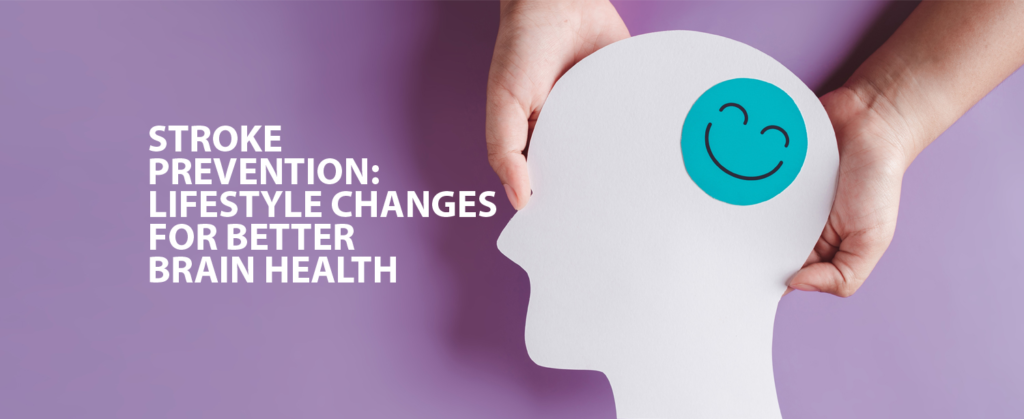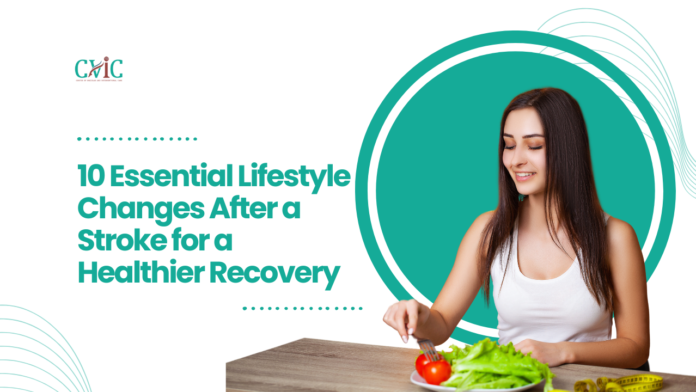What Lifestyle Changes Are Recommended After a Stroke?
Recovering from a stroke is a journey that extends far beyond immediate medical care. It involves transforming various aspects of daily living to ensure both physical and mental well-being. After a stroke, survivors face a heightened risk of additional strokes and other health complications, making lifestyle changes not just beneficial but crucial for long-term recovery.
In this guide, we’ll explore some of the most critical lifestyle changes that stroke survivors can adopt to boost their recovery, enhance overall health, and reduce the risk of future strokes.
Understanding Stroke Recovery
A stroke occurs when blood flow to part of the brain is interrupted, causing brain cells to die. This can lead to long-term disability, but with the right rehabilitation and lifestyle adjustments, many stroke survivors can regain independence and improve their quality of life.
The recovery process is influenced by the severity of the stroke, the area of the brain affected, and the speed of medical intervention. However, lifestyle plays a significant role in stroke prevention and rehabilitation. Let’s dive into the essential changes that every stroke survivor should consider.
Also Read: Top 7 Best Treatment Options for Aneurysms: Effective Solutions for Better Health

1. Prioritize a Heart-Healthy Diet
Diet is at the core of stroke prevention and recovery. After a stroke, it’s important to adopt a heart-healthy diet that helps control blood pressure, cholesterol, and blood sugar levels.
A few dietary tips for stroke survivors:
- Focus on whole grains, fruits, and vegetables: These foods are rich in fiber, antioxidants, and vitamins that support overall health.
- Limit salt and sugar intake: High sodium levels can lead to elevated blood pressure, while excessive sugar increases the risk of diabetes—both risk factors for a second stroke.
- Choose lean proteins: Fish, poultry, and legumes are great alternatives to red meats, which are higher in saturated fats.
- Incorporate healthy fats: Opt for sources of unsaturated fats like olive oil, avocados, and nuts.
A balanced, nutritious diet not only aids in recovery but can also significantly reduce the risk of future cardiovascular events.
2. Engage in Regular Physical Activity
Exercise is a vital part of post-stroke recovery. Physical activity can help improve mobility, balance, and coordination—challenges that many stroke survivors face. Moreover, staying active promotes cardiovascular health, reduces stress, and improves mood.
Here’s how to incorporate exercise into your routine:
- Start small: Begin with light activities like walking or gentle stretching exercises.
- Consult a physical therapist: A professional can develop an exercise plan tailored to your needs and capabilities.
- Aim for consistency: Regular exercise, even in small amounts, can make a significant difference over time.
Moderate exercise can reduce blood pressure, improve circulation, and help maintain a healthy weight—key factors in reducing the risk of recurrent strokes.
Also Read: Understanding Aortic Aneurysm: Causes, Symptoms, and Life-Saving Treatment Options

3. Manage Blood Pressure
High blood pressure (hypertension) is one of the leading risk factors for strokes. Controlling blood pressure is essential for preventing another stroke and promoting recovery.
Effective strategies for managing blood pressure include:
- Take prescribed medications: Ensure that you are following your doctor’s advice regarding blood pressure medication.
- Monitor your blood pressure regularly: Keeping track of your numbers can help you stay aware of any concerning changes.
- Reduce salt intake: Lowering sodium consumption is one of the most effective ways to manage hypertension.
Monitoring blood pressure at home and working closely with healthcare providers can help keep this critical factor under control.
4. Quit Smoking and Avoid Excessive Alcohol
Both smoking and heavy drinking are significant risk factors for strokes. They contribute to hypertension, cardiovascular disease, and overall poor health. Quitting smoking and limiting alcohol intake are two of the most important lifestyle changes a stroke survivor can make.
- Smoking: Cigarettes cause blood vessels to narrow and increase clot formation, heightening stroke risk.
- Alcohol: If you drink, do so in moderation. Excessive alcohol consumption raises blood pressure and can lead to weight gain.
Cutting out these habits will not only reduce the likelihood of another stroke but will also enhance overall health and improve the effectiveness of other lifestyle changes.
5. Maintain a Healthy Weight
Weight management is essential after a stroke. Obesity increases the risk of high blood pressure, heart disease, and diabetes—conditions that can lead to additional strokes. Maintaining a healthy weight through a balanced diet and regular exercise can help mitigate these risks.
Here are some ways to achieve and maintain a healthy weight:
- Eat smaller portions: Reducing portion sizes can help control calorie intake.
- Make healthier food swaps: Choose low-fat and low-calorie alternatives where possible.
- Stay active: As mentioned earlier, regular physical activity is key.
Losing even a small amount of weight can have significant health benefits for stroke survivors.
Also Read: Top Brain Aneurysm Doctors in Indore: Expert Care for Safe and Effective Treatment
6. Get Enough Sleep
Sleep plays an important role in the body’s healing process, especially after a stroke. Poor sleep can increase the risk of stroke recurrence by affecting blood pressure, heart health, and brain function.
To improve your sleep quality:
- Establish a bedtime routine: Go to bed and wake up at the same time each day.
- Limit screen time before bed: The blue light emitted by phones, tablets, and TVs can interfere with your sleep cycle.
- Avoid caffeine late in the day: Caffeine can make it harder to fall asleep and reduce sleep quality.
Adequate sleep helps reduce stress, lowers blood pressure, and supports overall brain health, which is critical for stroke recovery.

7. Manage Stress and Mental Health
Stress management is crucial for stroke survivors. Prolonged stress can elevate blood pressure and increase the risk of another stroke. Additionally, stroke survivors are more prone to anxiety and depression, which can complicate recovery.
Strategies for managing stress include:
- Mindfulness and meditation: Practices such as deep breathing, yoga, and meditation can help reduce stress levels.
- Counseling or therapy: A mental health professional can provide support for coping with emotional challenges post-stroke.
- Social support: Connecting with loved ones or joining a support group can help combat feelings of isolation and improve mental health.
Taking care of your mental health is as important as physical health in stroke recovery.
8. Follow Up with Healthcare Providers
Regular follow-ups with your doctor and healthcare team are crucial after a stroke. These appointments help monitor your progress, manage medications, and address any new symptoms or concerns.
During these checkups, your healthcare provider will:
- Adjust medications as needed: Stroke survivors often require medications for blood pressure, cholesterol, and other conditions.
- Monitor recovery progress: Your doctor will assess how well you’re recovering and offer guidance on further rehabilitation steps.
- Provide preventative advice: This includes lifestyle recommendations and screenings for stroke risk factors.
Regular medical care is essential to catch any warning signs of future strokes and ensure your recovery is on track.
9. Stay Informed and Educate Yourself
Understanding your condition and knowing how to manage it is empowering. Learn as much as you can about stroke prevention, treatment, and recovery options. Staying informed allows you to take an active role in your health and recovery.
Here are some ways to educate yourself:
- Read reliable health resources: Websites like the American Stroke Association and Mayo Clinic offer a wealth of information on stroke recovery.
- Ask your healthcare provider: Don’t hesitate to ask your doctor for explanations or recommendations.
- Join stroke support groups: Engaging with others who have experienced a stroke can provide valuable insights and emotional support.
Knowledge is a powerful tool in preventing future strokes and promoting long-term recovery.
10. Stay Positive and Patient
Recovering from a stroke takes time and persistence. Progress can be slow, but with dedication to these lifestyle changes and a positive mindset, improvement is possible. Celebrate small victories along the way and stay focused on your long-term health goals.
FAQs
What is the most important lifestyle change after a stroke?
Managing blood pressure is often the most critical lifestyle change. High blood pressure is the leading cause of strokes, so controlling it significantly reduces the risk of a recurrence.
Can diet affect stroke recovery?
Yes, a heart-healthy diet rich in fruits, vegetables, and whole grains can support recovery by lowering cholesterol and blood pressure, reducing the risk of further strokes.
How much should I exercise after a stroke?
Consult your doctor or physical therapist for personalized advice. In general, it’s survivors should aim for at least 30 minutes of moderate activity most days, but this will depend on individual capabilities.
Is quitting smoking really necessary after a stroke?
Yes, quitting smoking is one of the most important steps you can take. Smoking dramatically increases the risk of additional strokes and other cardiovascular problems.
How can I manage stress after a stroke?
Techniques such as meditation, deep breathing, counseling, and support groups can help you manage stress and prevent it from affecting your recovery.
By adopting these lifestyle changes after it, survivors can enhance their recovery, improve their quality of life, and significantly reduce the risk of future strokes.




